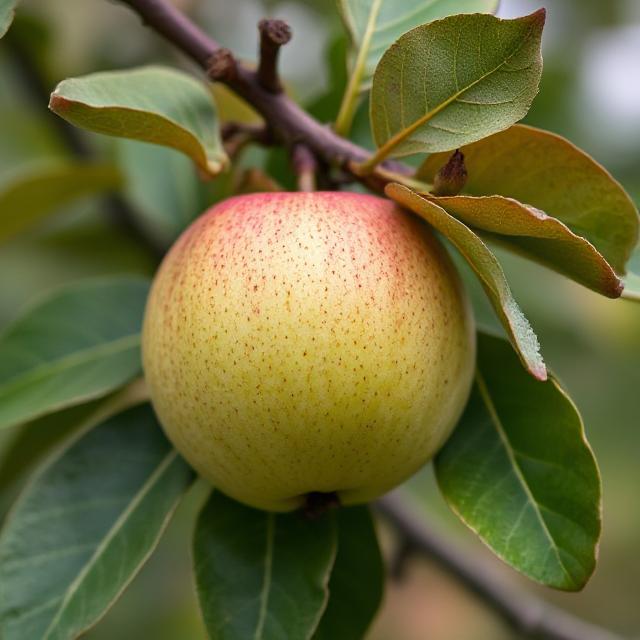Sitafal (Sugar-Apple) Nutrition, Benefits & Side Effects: The Sweet Superfruit Explained
🥭 Introduction: The Sweet Story of Sitafal (Sugar-Apple)
Nature has blessed us with fruits that are not only delicious but also nutrient-rich — and Sitafal (Sugar-Apple) is one such treasure. Also known as Custard Apple, Sharifa, or Ram Phal, this tropical fruit is widely loved across India for its creamy sweetness, soft texture, and distinct aroma.
Belonging to the Annonaceae family, Sitafal grows abundantly in warm regions like Maharashtra, Tamil Nadu, and Andhra Pradesh. It’s often referred to as “nature’s dessert”, yet behind its sugary taste lies a powerhouse of health benefits — from improving digestion to strengthening immunity.
Let’s explore the complete nutritional, medicinal, and cultural significance of Sitafal, along with when and how to eat it for maximum benefits.
🍃 1. What is Sugar-Apple (Sitafal)?
Sitafal, or Sugar-Apple, is the fruit of the Annona squamosa tree. It has a scaly green outer covering and a soft, creamy white pulp inside that’s divided into sweet, custard-like segments.
- Scientific Name: Annona squamosa
- Common Names: Custard Apple (English), Sitafal (Hindi/Marathi), Sharifa (Urdu), Seethapazham (Tamil), Ram Phal (Telugu).
- Native Region: Tropical Americas, now widely grown in India, Thailand, and the Philippines.
This fruit is typically harvested in late monsoon to early winter (September–December) and is considered auspicious during festive seasons like Navratri and Diwali.
🧬 2. Sitafal Nutrition: What’s Inside This Creamy Fruit?
Despite its sweetness, Sitafal is packed with essential nutrients and natural sugars that provide energy and nourishment.
Nutritional Value (per 100g of Custard Apple):
| Nutrient | Amount |
|---|---|
| Calories | 94 kcal |
| Carbohydrates | 23.6 g |
| Fiber | 4.4 g |
| Protein | 2.1 g |
| Fat | 0.5 g |
| Vitamin C | 35–40 mg (70% of daily requirement) |
| Vitamin B6 | 0.2 mg |
| Calcium | 30 mg |
| Magnesium | 18 mg |
| Potassium | 250 mg |
| Iron | 1 mg |
Highlights:
- Rich in antioxidants like Vitamin C.
- Good source of magnesium and potassium for heart health.
- Low in fat, yet high in natural sugars for instant energy.
🌿 3. Sitafal Khane Ke Fayde (Health Benefits of Eating Custard Apple)
a. Boosts Immunity
High levels of Vitamin C in Sitafal strengthen white blood cell activity and help fight infections. Regular consumption helps your body resist cold and flu, especially during winter.
b. Promotes Healthy Digestion
The fiber in Sitafal supports smooth digestion and prevents constipation. Its natural digestive enzymes aid in better nutrient absorption.
c. Good for Heart Health
The potassium-magnesium balance regulates blood pressure and prevents arterial stiffness, reducing the risk of heart diseases.
d. Excellent for Skin Glow
Custard apple contains antioxidants that combat free radicals and slow down skin aging. Applying Sitafal pulp as a natural face mask can hydrate and brighten dull skin.
e. May Help Manage Diabetes (in Moderation)
Although sweet, Sitafal’s fiber content slows glucose absorption. When eaten in moderation, it can support diabetic diets, especially if balanced with other low-GI foods.
f. Strengthens Bones
With good levels of calcium and magnesium, Sitafal helps maintain bone density, making it beneficial for women and elderly individuals.
g. Improves Brain Function
Rich in Vitamin B6, Sitafal supports neurotransmitter production and helps reduce stress and depression.
h. Supports Pregnancy Health
Pregnant women can benefit from Sitafal’s iron and folate, which help prevent anemia and support fetal growth. However, it should be consumed under medical supervision.
🧡 4. Sitafal Khane Ke Fayde Aur Nuksan (Benefits and Side Effects)
Benefits:
- Natural energy booster
- Rich in antioxidants
- Aids digestion and gut health
- Boosts immunity
- Keeps skin and hair healthy
Possible Side Effects:
- Overconsumption may raise blood sugar levels.
- Seeds are toxic if crushed or consumed — always remove them.
- May cause cold or congestion in people with respiratory sensitivity.
Tip: Avoid refrigerated Sitafal if you’re prone to sinus or cough during winter.
🌼 5. Sharifa Fruit Benefits for Skin
Custard apple is a natural skincare superfruit.
Here’s how it helps:
- Hydration: Keeps skin supple and soft due to high water content.
- Antioxidant Boost: Vitamin C and polyphenols reduce oxidative stress.
- Anti-Aging: Slows wrinkle formation and fine lines.
- Natural Glow: Promotes collagen production for firm, youthful skin.
DIY Tip: Mix mashed Sitafal pulp with honey and apply for 15 minutes. Rinse with cold water for instant radiance.
💉 6. Custard Apple for Diabetes — A Myth or Miracle?
While Sitafal has natural sugars, it also contains dietary fiber and polyphenols that moderate sugar spikes.
For diabetics:
- Eat in small portions (½ fruit).
- Pair with protein-rich foods (nuts, seeds).
- Avoid eating with other high-sugar fruits.
✅ Verdict: Custard apple is safe for diabetics in moderation, but always consult your doctor before including it regularly.
🤧 7. Does Custard Apple Cause Cold?
Yes, it can in some individuals. Sitafal’s cooling nature and mucous-forming tendency can trigger cold or cough, especially when eaten:
- In large amounts
- At night or after refrigeration
Tip: Eat it fresh at room temperature, preferably in the afternoon, to avoid such effects.
🌳 8. What is Ram Phal? Is It the Same as Sitafal?
While both belong to the Annona family:
- Sitafal (Annona squamosa) → Sweeter, smaller, green-scaled fruit.
- Ram Phal (Annona reticulata) → Bigger, reddish-green fruit with a distinct aroma.
Both have similar nutritional profiles but Ram Phal is slightly less sweet and contains more fiber.
🍎 9. Benefits of Eating Sitafal Regularly
- Enhances metabolism
- Improves oxygen circulation
- Keeps hair healthy
- Supports eye health (due to Vitamin A precursors)
- Promotes restful sleep
Recommended Intake:
1 medium Sitafal per day during the season (3–4 times a week).
⏰ 10. Best Time to Eat Custard Apple
- Morning or Noon — Helps in digestion and energy balance.
- Avoid eating at night, as the sugar may cause bloating or cold.
Pair Sitafal with dry fruits or yogurt for a balanced nutrient mix.
🔪 11. How to Cut Custard Apple the Right Way
- Wash the fruit properly.
- Slice it into halves using a clean knife.
- Use a spoon to scoop out the creamy pulp.
- Remove the black seeds before eating.
Note: The skin and seeds are not edible. Seeds contain alkaloids that can irritate the stomach if consumed.
🏺 12. Origin of Sitafal: A Historical Glimpse
Custard apple originated in South America and was introduced to India by Portuguese traders around the 16th century.
Since then, it has become deeply rooted in Indian agriculture, particularly in:
- Maharashtra (Pune, Nasik)
- Andhra Pradesh
- Tamil Nadu
- Chhattisgarh
Locally known as “Sharifa” (Arabic: noble), Sitafal is also symbolically associated with fertility and prosperity.
🧠 13. Cultural and Ayurvedic Importance
In Ayurveda, Sitafal is classified as:
- Sheetal (cooling)
- Madhura (sweet)
- Vata-pitta shamak (balances body energy)
It’s prescribed for:
- Increasing body strength
- Healing ulcers
- Reducing acidity and inflammation
🧾 14. Frequently Asked Questions (FAQ)
Q1. Can I eat Sitafal daily?
Yes, but limit it to one fruit per day during the season to avoid excessive sugar intake.
Q2. Is Sitafal good for weight gain?
Yes! Its calorie density and natural sugars help in healthy weight gain.
Q3. Is Sitafal good for babies?
It can be introduced after 1 year, in mashed form, under pediatric guidance.
Q4. Can I eat Sitafal at night?
Avoid — it can increase mucus and disturb digestion at night.
Q5. What happens if you swallow Sitafal seeds?
Swallowing one seed may not harm, but crushed seeds are toxic — avoid consuming them.
🌟 15. Key Takeaways
- Sitafal (Sugar-Apple) is nutrient-rich, antioxidant-packed, and heart-healthy.
- Consume fresh, room-temperature fruit in moderation.
- Avoid refrigerated or excessive intake to prevent cold and sugar spikes.
- Perfect winter-season fruit for immunity and vitality.
⚠️ Disclaimer
The information in this article is for educational purposes only and should not replace medical advice. Always consult a qualified healthcare professional before making dietary changes, especially if you have diabetes, allergies, or chronic conditions.












